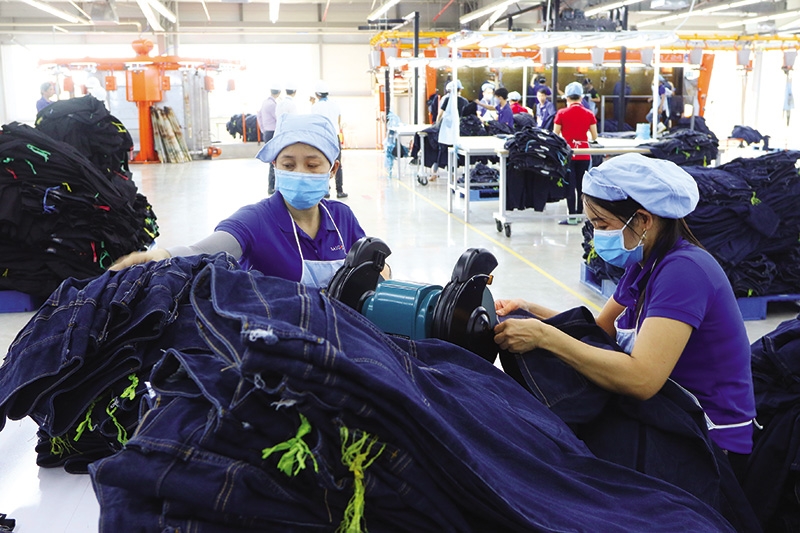The risk in ignoring climate change
 |
| Businesses can do well to create a sustainable strategy by researching uncertainties to their performance in terms of physical climate risks, and those of regulatory change |
The current model of the economy, the linear economy, has been based since the 18th century solely on the form of extraction, use, and waste of resources. This economic model has had a negative impact on the balance of the planet over the last 50 years, putting the natural cycle at risk.
 |
| Miguel Santos |
The green and circular economies as sustainable economies could be part of the solution to climate change. The green economy concept, defined as welfare and social equity, can reduce risks to the environment and resource scarcity. This economic model can provide an increase in the quality of life within the ecological limits of the globe, allocating economic, social, and environmental considerations into a sustainable development.
The circular economy model is highlighted between two cycles, the technical and the biological. In the case of consumption, it takes place only in biological cycles, where food and bio-based materials are thought to return to the system through natural processes such as composting and anaerobic digestion. These cycles regenerate all living systems, such as soils, providing renewable resources for the economy. The technical cycles focus on the recovery and restoration of products and materials with a strategy of reuse, repair, remanufacturing, or recycling.
Managing availability
Every year, companies all over the world have suffered high losses caused by climate change, damaging facilities and other assets. This jeopardises entire business operations, especially if their physical assets are in regions prone to extreme weather conditions, limiting access to the resources necessary for the proper functioning of companies. Climate change has a direct and very serious impact on a company’s economy, and conditioning the logistical supply or the availability of material can have a devastating impact on the operations and performance of such companies.
Anticipating effective measures can turn risks into a competitive advantage, because by adapting you will be incorporating increasing regulatory, environmental, and consumer pressures. Businesses will be able to use climate mitigation strategies and initiatives in structures with climate prevention processes and strategies by evaluating and developing financial mechanisms and tools to support the implementation of a corporate culture of climate change with the support and adherence of workers who, when motivated, will be more productive.
The use of renewable and alternative energies, rainwater harvesting, waste management, and sustainable consumption could be the most appropriate strategies to combat climate change in order to be able to have a more sustainable and projected business economy for the future. Initially there will have to be some investments in certain specific points of the companies, but with the certainty that there will probably be a return on investment in the medium and long term.
There are two types of climate risks for companies, value chain risks and external stakeholder risks. Value chain risks are physical, pricing, and product risks. Physical risks are related to damage caused to infrastructure that jeopardises the proper functioning of the company. These types of physical hazards are impossible to control, and companies may start to take steps to better prepare for the changes that the climate will cause in the coming years.
In making a climate forecast, we are highlighting the probabilities of the risk, meaning floods, droughts, rising sea levels, rising temperatures, humidity, and normal rainfall patterns. This type of forecasting and analysis helps reveal the parts of the company that are most vulnerable to climate change. Greater variety in the risk mitigation process with technical standards and the ability to be implemented will be important.
Another risk in the value chain is price risk, which refers to the volatility of raw material prices. Carbon rates may increase energy prices, and drought may increase the price of water. The worst case scenario that a company may face in planning its business is uncertainty, as climate instability may further increase the pressure, hindering the development of production, energy, logistics, and the smooth running of companies.
Short-term policy mindset
As the last risk in the value chain we have the risk of the product, that is, the capacity that a product has to become unpopular due to climate change. In the relationship between businesses and consumers, especially in the sale of consumer products, new segments are making inroads as people become willing to pay for greener and more environmentally-friendly products.
In addition, there are the risks of external stakeholders, which focus on classification and regulatory risks. Classification risks can be defined when capital costs are higher due to climate interaction, such as setting a carbon tax or waste taxes. Regulatory risks are the actions of governments pressured by climate change where they will include rules that will increase costs or hinder certain specific activities of the economy, such as whether or not to access subsidies and development assistance. One of the biggest problems focuses on climate change policies due to the fact they are easily changed in election periods, making it difficult for companies to introduce the best strategies for future action and development.
In this context, companies also run reputational risks from the possibility of loss of income due to actions or activities that consumers or the general public may find highly damaging to the environment and to human health. Management methods and geography may influence or vary the results expected by companies.
Faced with this scenario, businesses are facing a great challenge in the near future. Climate change will have to be taken into account in companies’ annual budgets. There will have to be an increase in the percentage of capital in such budgets to deal with the possible problems caused by climate change, and in the event of damage or difficulties, it will have to be possible to cover the losses in a way that does not compromise economic activity.
This strategy will provide some security for businesses, allowing them to carry forward the percentage increase in the budget to the following year if there is no damage due to the climate, and no need for investment in the same year. Financial institutions will also play a very important role in this matter, as by adhering to this culture they will provide credit lines for companies to be able to cover the risks derived from climate change and the damage caused by it.
Companies that ignore all the risks directly related to climate change will face the consequences in the worst way. Companies that implement policies to adapt activities to extreme climate events and possible limitations on natural resource access will benefit most from the ability to face losses caused by any such events occurring in the sphere of the company’s economic activity.
What the stars mean:
★ Poor ★ ★ Promising ★★★ Good ★★★★ Very good ★★★★★ Exceptional
Related Contents
Latest News
More News
- Takeda supports health resilience amid climate change challenges (December 18, 2025 | 12:39)
- Mondelez Kinh Do - a chapter of purpose-led leadership in Vietnam (December 18, 2025 | 09:44)
- VNPAY services receive the highest-level PCI DSS international security certificates for six consecutive years (December 17, 2025 | 23:47)
- PPL extends its reach into ASEAN (December 17, 2025 | 15:44)
- Over 600 BUV graduates meeting quality benchmarks across triple quality assurance levels (December 17, 2025 | 13:00)
- HEINEKEN Vietnam partners with Ho Chi Minh City Traffic Police on road safety drive (December 17, 2025 | 09:42)
- BUV and China’s CSCSE sign MoU to boost educational cooperation (December 17, 2025 | 08:00)
- PVT Logistics honoured with ‘Fast Enterprise Award’ at APEA 2025 (December 16, 2025 | 18:22)
- Empowering Sustainable Data Centers with Smart Infrastructure Solutions (December 16, 2025 | 13:59)
- Vietjet wins gold ESG transport sustainability award in Taiwan (China) (December 13, 2025 | 22:03)

 Tag:
Tag:






















 Mobile Version
Mobile Version